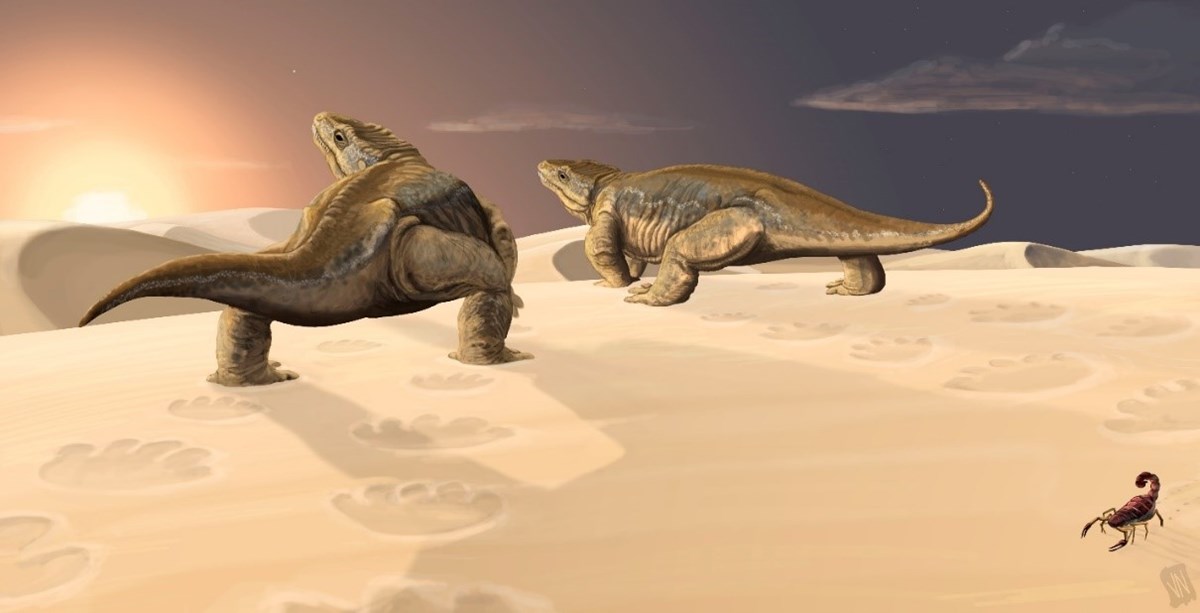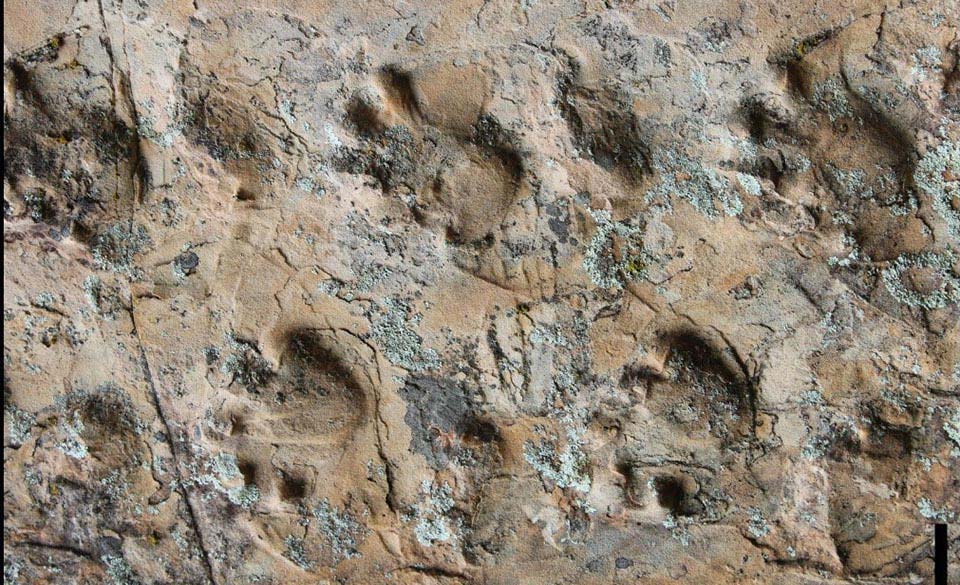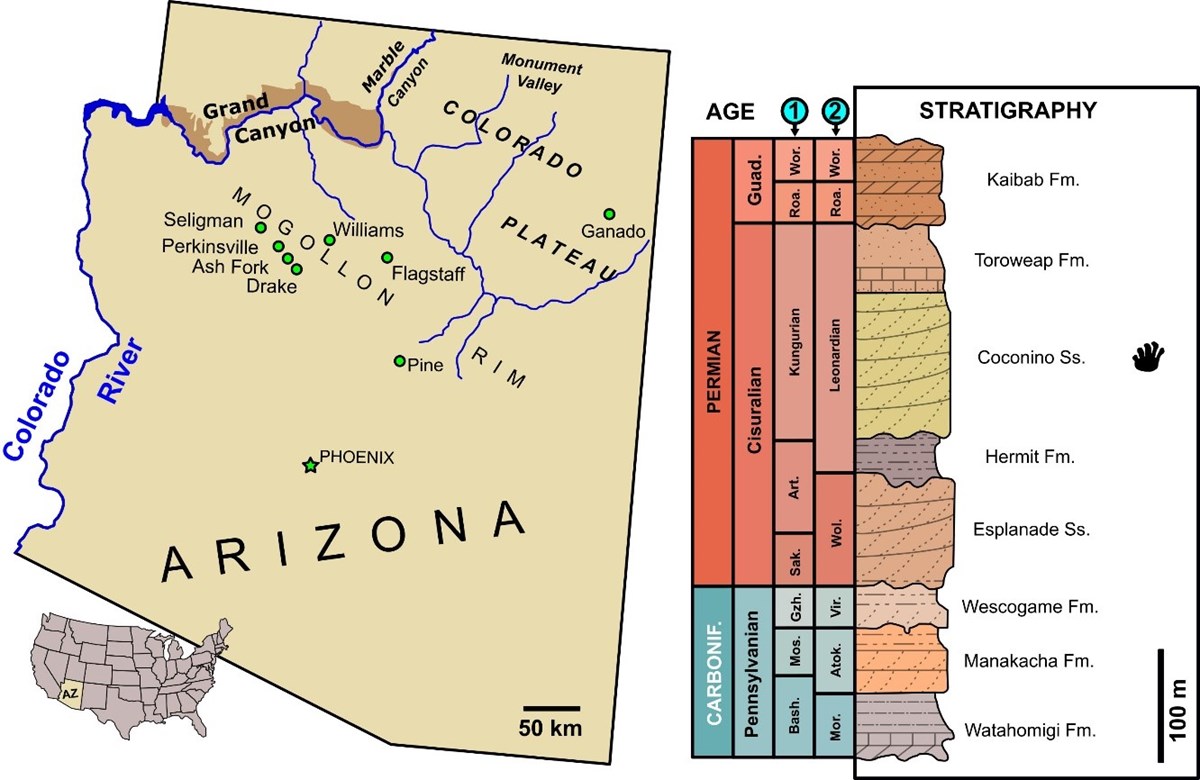 VIEW LARGER Artwork depicting the Coconino Desert environment and two primitive tetrapods, based on analysis of fossil footprints from Grand Canyon National Park.
VIEW LARGER Artwork depicting the Coconino Desert environment and two primitive tetrapods, based on analysis of fossil footprints from Grand Canyon National Park. PHOENIX — An international team is studying 280-million-year-old fossil footprints recently found on a large sandstone boulder in Grand Canyon National Park.
The research appears in the journal Paläontologische Zeitschrift.
Before the age of dinosaurs dawned, Northern Arizona was a desert of dunes and blowing sand.
 VIEW LARGER Close-up view of the Ichniotherium trackway from Grand Canyon National Park.
VIEW LARGER Close-up view of the Ichniotherium trackway from Grand Canyon National Park. Today, evidence of that desert survives in a 1,000-foot layer of Coconino sandstone.
Of its animal occupants, nothing remains but fossil footprints, found in places like Seligman, Flagstaff and the Grand Canyon area.
Scientists have interpreted the newly found trackways as belonging to a group of four-footed animals called diadectomorphs.
The fossil tracks mark the first evidence of the large reptile-like amphibians living in a desert environment and could help scientists understand how animals first became fully land-dwelling.
 VIEW LARGER The Grand Canyon National Park area is shaded dark brown (left). Stratigraphic section of the Pennsylvanian and Permian rocks exposed in the Grand Canyon area (right), in this figure included in an NPS media release.
VIEW LARGER The Grand Canyon National Park area is shaded dark brown (left). Stratigraphic section of the Pennsylvanian and Permian rocks exposed in the Grand Canyon area (right), in this figure included in an NPS media release.
 VIEW LARGER This image included in an NPS press release shows the track-bearing boulder (Coconino Sandstone) in Grand Canyon National Park, Arizona. General view of the boulder and the tracks (left). False color depth map (depth in mm) (right). Scale: 50 cm
VIEW LARGER This image included in an NPS press release shows the track-bearing boulder (Coconino Sandstone) in Grand Canyon National Park, Arizona. General view of the boulder and the tracks (left). False color depth map (depth in mm) (right). Scale: 50 cm


By submitting your comments, you hereby give AZPM the right to post your comments and potentially use them in any other form of media operated by this institution.